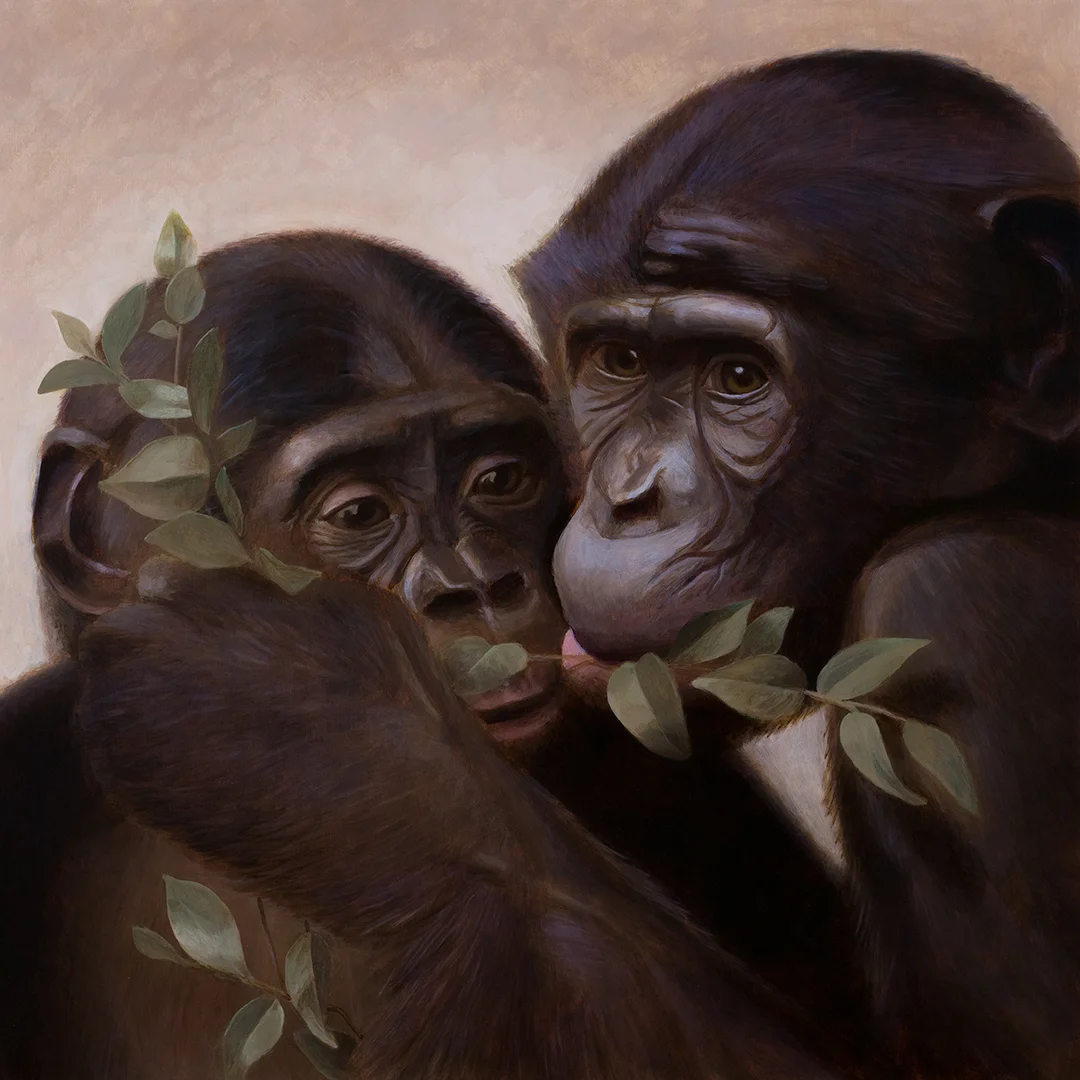In June, I decided to go on a road trip to Ohio. The Cincinnati Zoo has a unique collection of small cats that includes species like the spunky black-footed cat, the agile caracal, and the famously grumpy pallas cat. I had high hopes that these small cats would make good painting subjects. As it turns out, the Night Hunters exhibit is poorly lit and the cats were uncooperative (which is the prerogative of all cats). Fortunately, all was not lost because I had another reason for visiting the Cincinnati zoo: bonobo chimpanzees.
The first time I learned about bonobos was in the 90’s, when I read about Kanzi, a bonobo that was able to communicate using lexigrams. This was before the age of YouTube and streaming video, so I only had the article’s text to go on, but I remember being fascinated by the idea of communicating with another species. I also wondered: was there something special about bonobos? Was Kanzi a one-of-a-kind genius? The following documentary, made in the 90’s, provides a glimpse into Kanzi’s life, and suggests some answers to those questions:
Some background: Bonobos (aka the pygmy chimpanzee; pan paniscus) are the less well-known cousins of the common chimpanzee (pan troglodytes). Physically, they are slighter and more comfortable walking upright than their common cousins. Primatologists say that bonobos bear a close resemblance to Lucy (Australopithecus afarensis), one of our hominid ancestors.
Socially, bonobos are matriarchal. Temperamentally, bonobos are gentle and peaceful, preferring to use affection and sex to resolve differences instead of the violence that their common cousins often resort to. The famed primatologist, Frans de Waal refers to bonobos as “The Make Love, Not War” primates.
I knew all of this when I drove down to Cincinnati. But facts are one thing. Seeing the bonobos in person was another. Prior to Cincinnati, my encounters with non-human great apes had been limited to gorillas and orangutans in North American zoos. I’ve always admired gorillas and orangutans, but I’ve also sensed a certain reticence when I’ve spent time observing them. Not so with the bonobos.
When I entered the viewing area, two youngsters, Bolingo and Kibibi, were rough housing with each other and an adult male, Vergil. When I squatted down to take a photo, they all looked at me and the youngest one, Bolingo, approached me before being pulled back to the play session by Kibibi.
A while later, a young female, Clara, approached the window, locked eyes with me, and placed her hand on the glass separating us. I placed my hand over Clara’s and she held my gaze for a few seconds before venturing back to the group. I felt quite moved by this brief connection.
Bonobos and common chimpanzees are our closest living relatives. We share 98% of our DNA with them. Behaviourally, the two chimpanzee species differ wildly in their propensity for violence: common chimpanzees conduct murderous raids on neighbouring troops, while bonobos will help strangers with no promise of reward.
Frans de Waal describes humans as the bipolar ape: occupying a space that is somewhere between the bonobo and the common chimpanzee. Based on the brief time I spent with them, I think we would do well to learn from the bonobos, our playful and gentle cousins.
